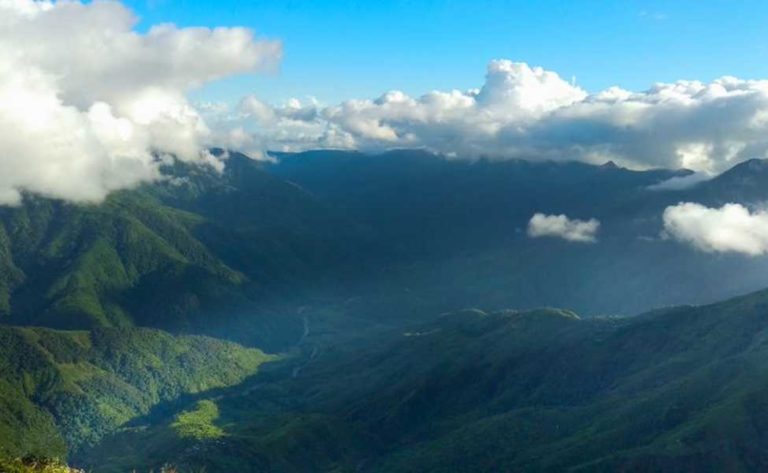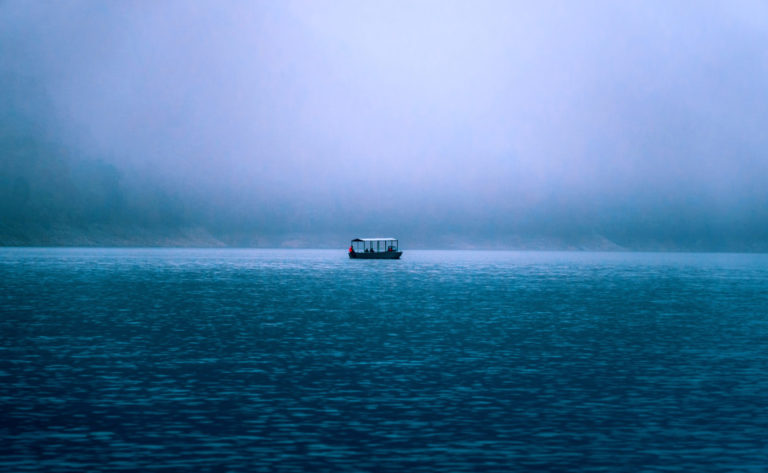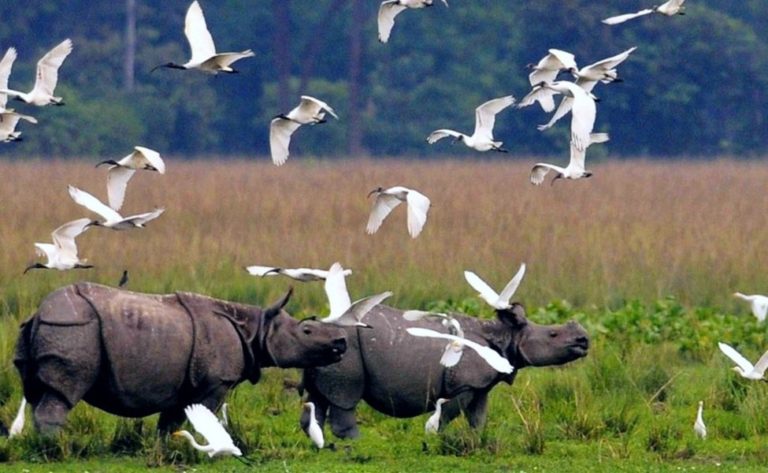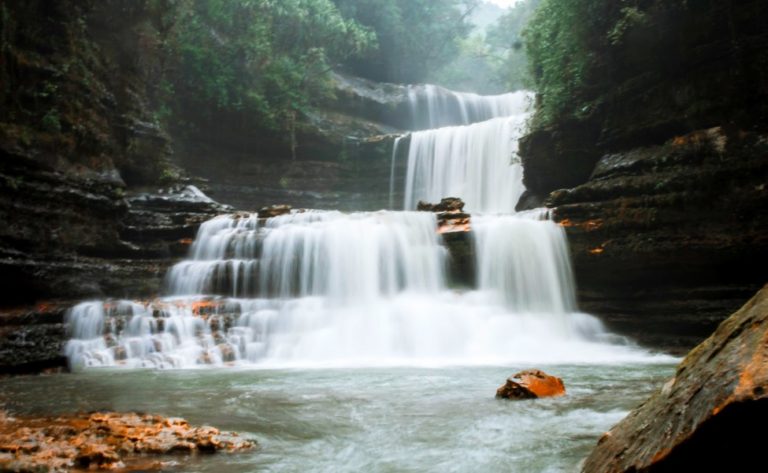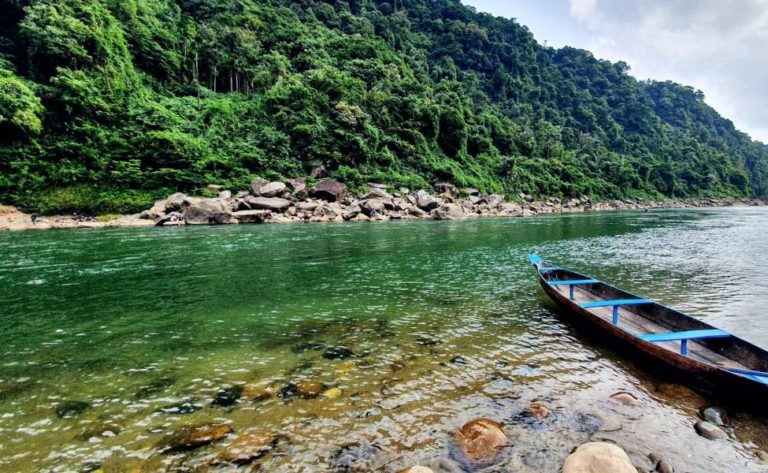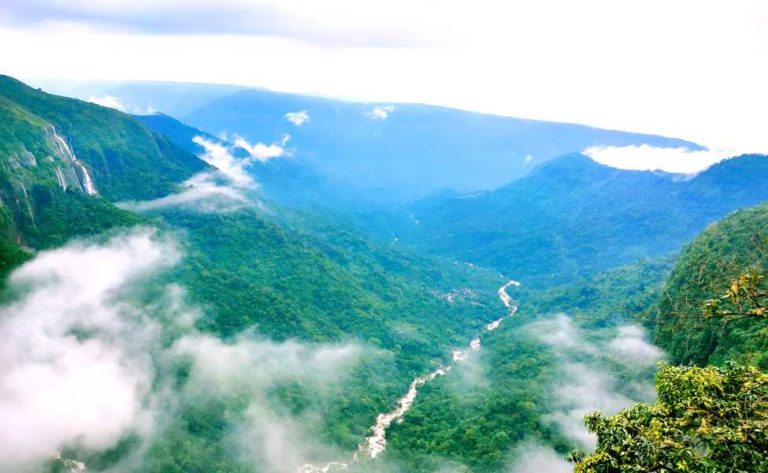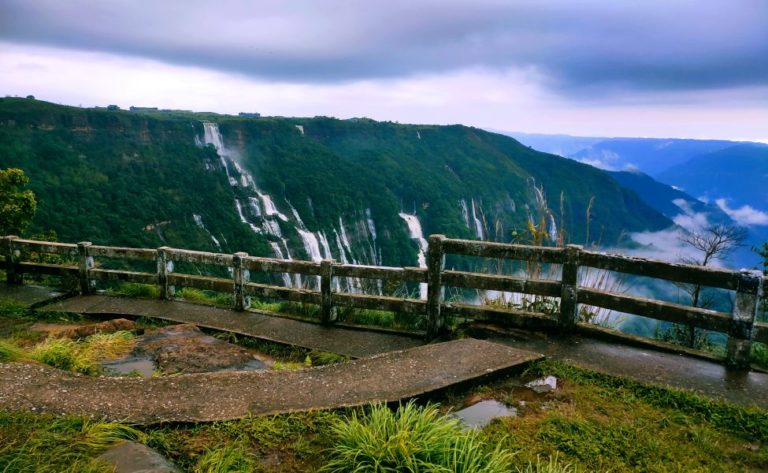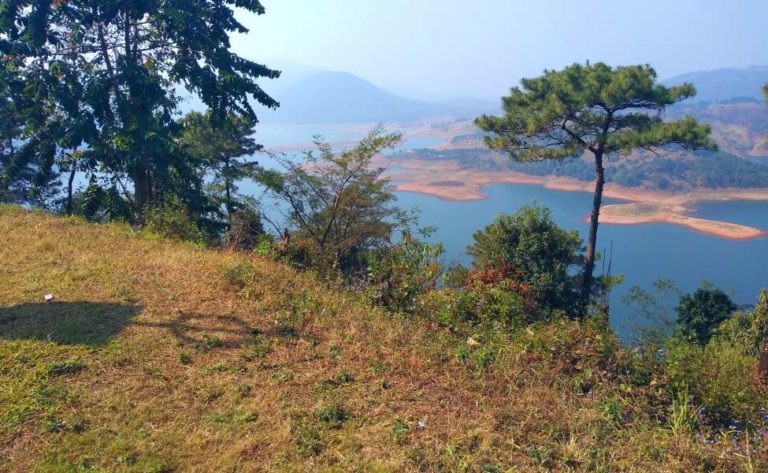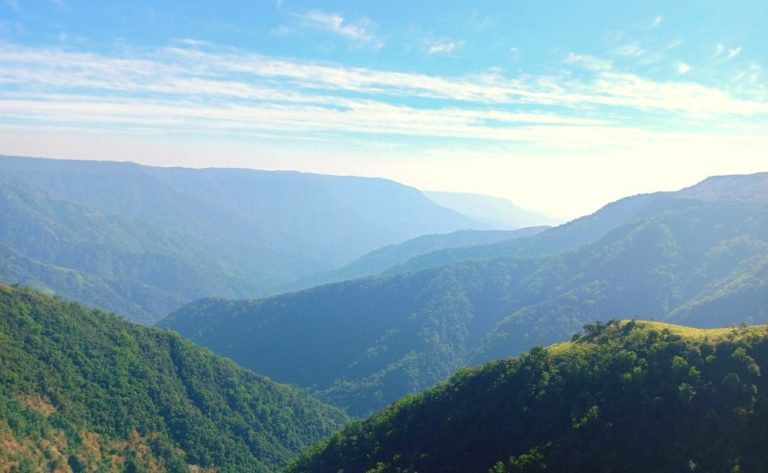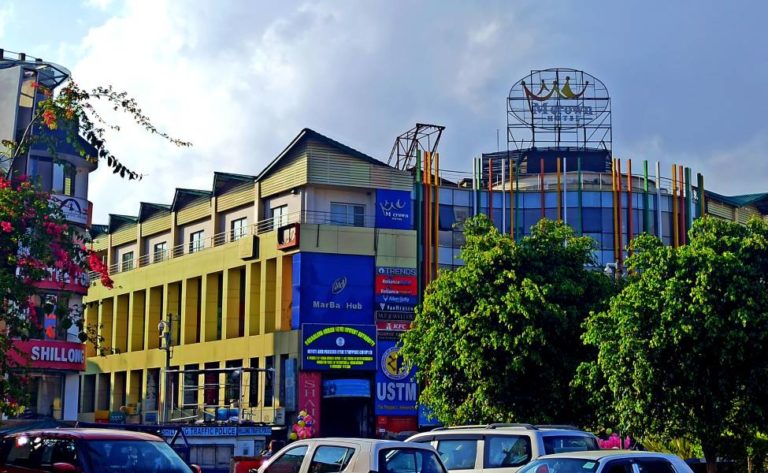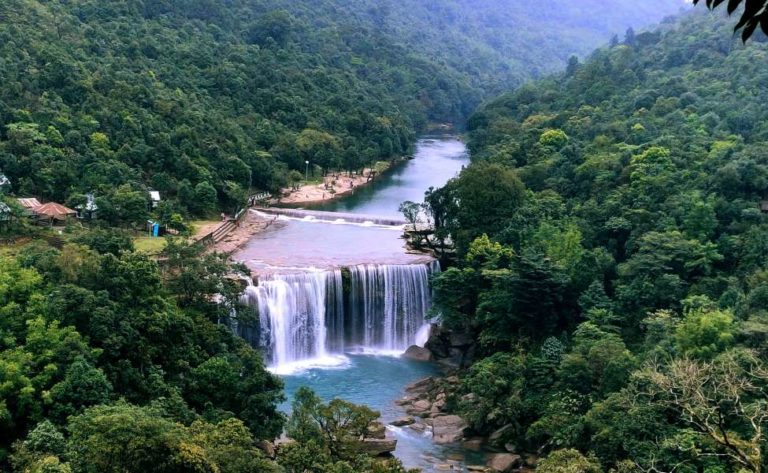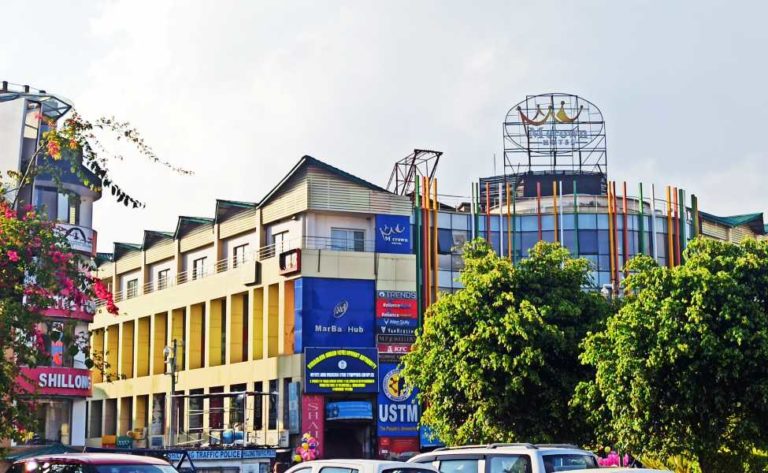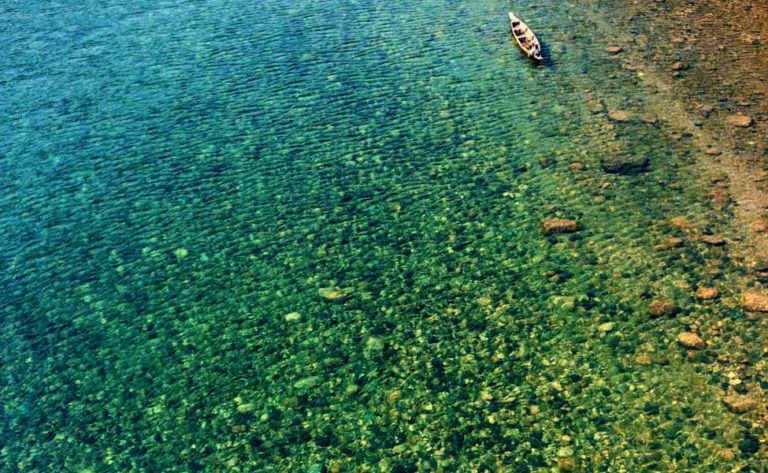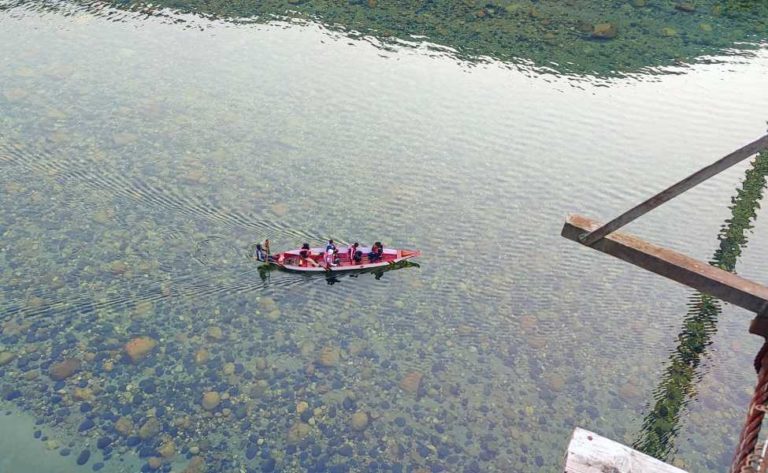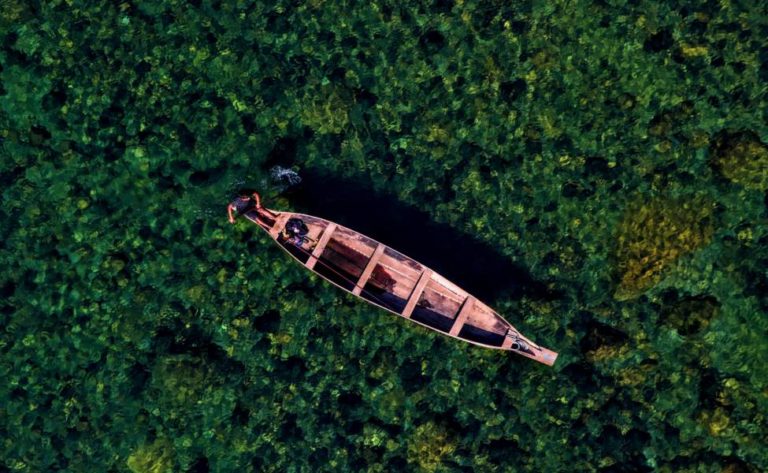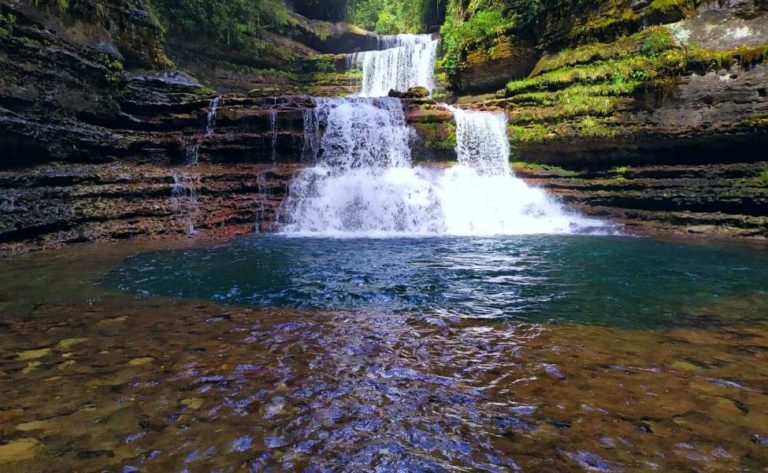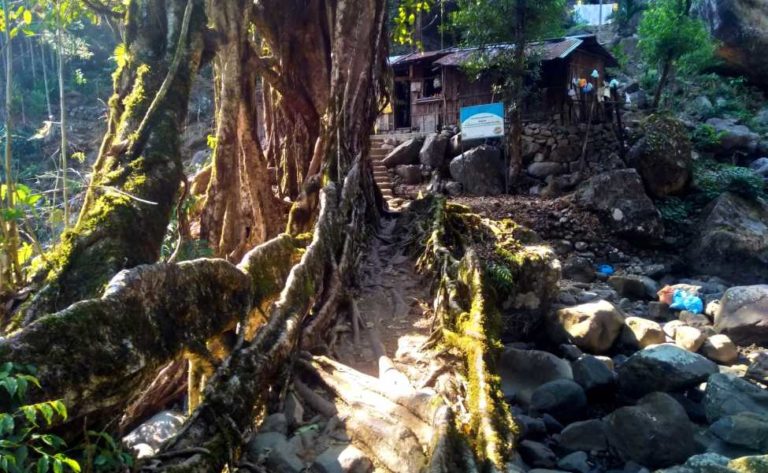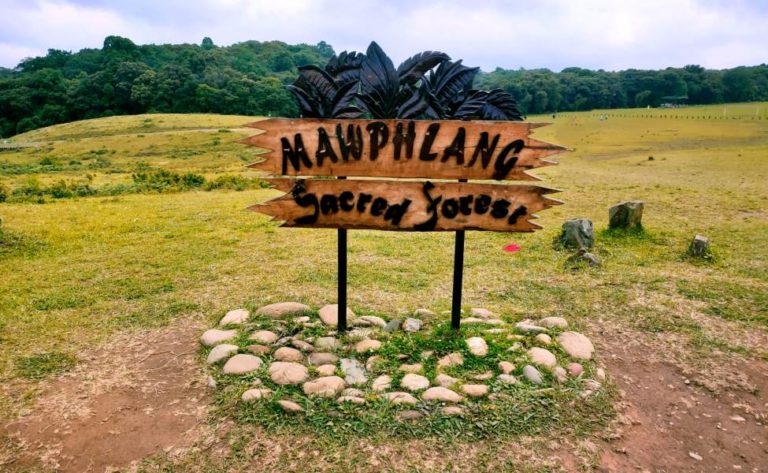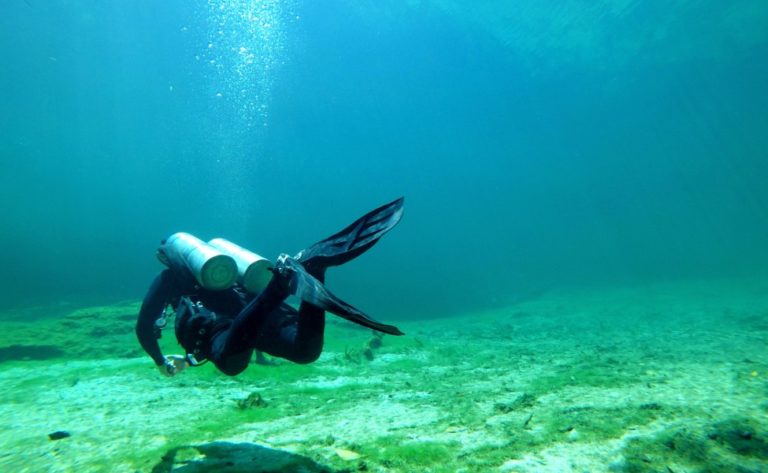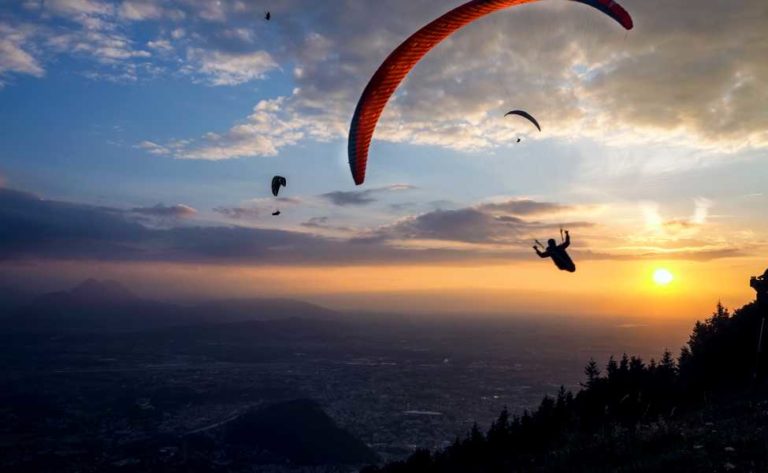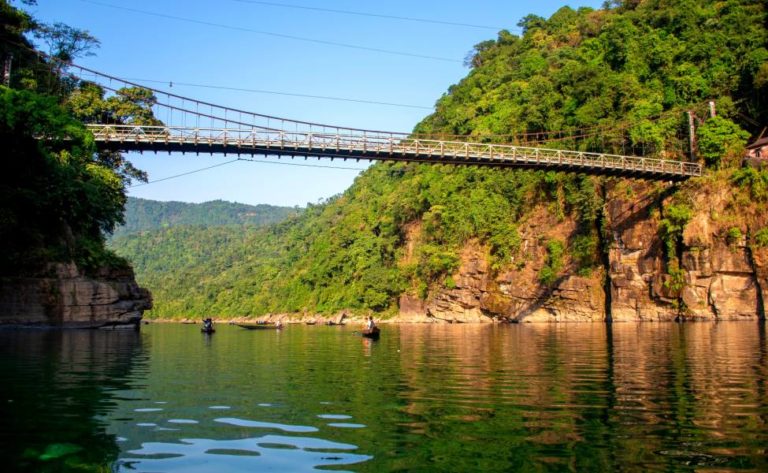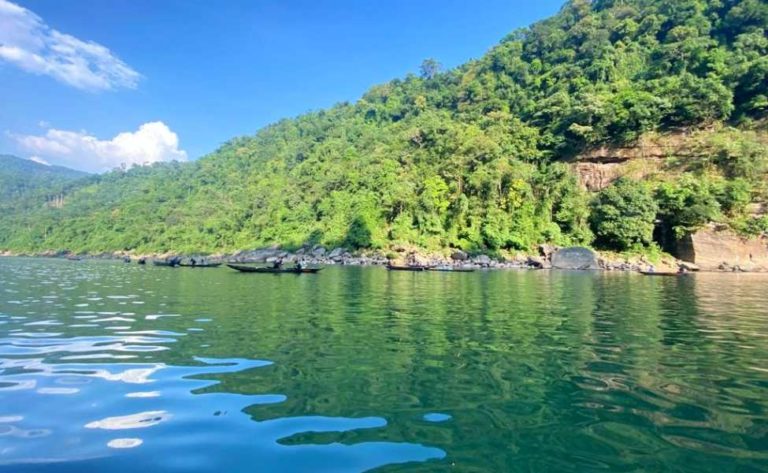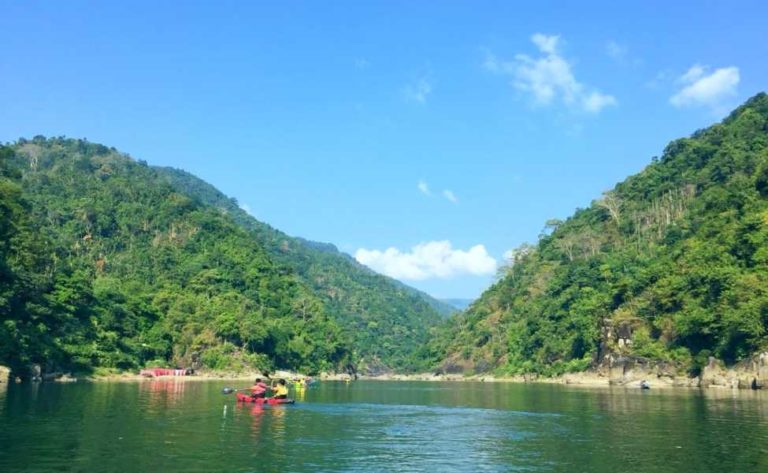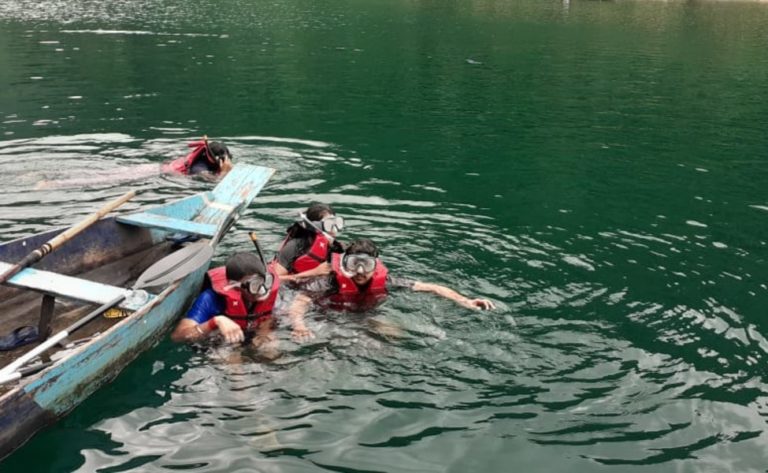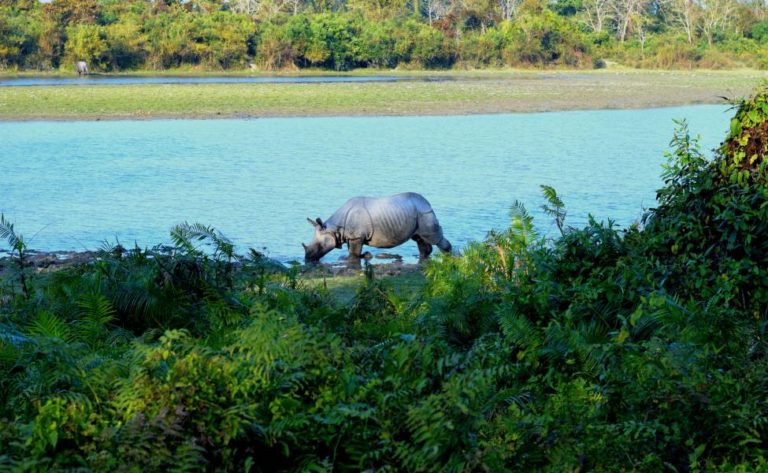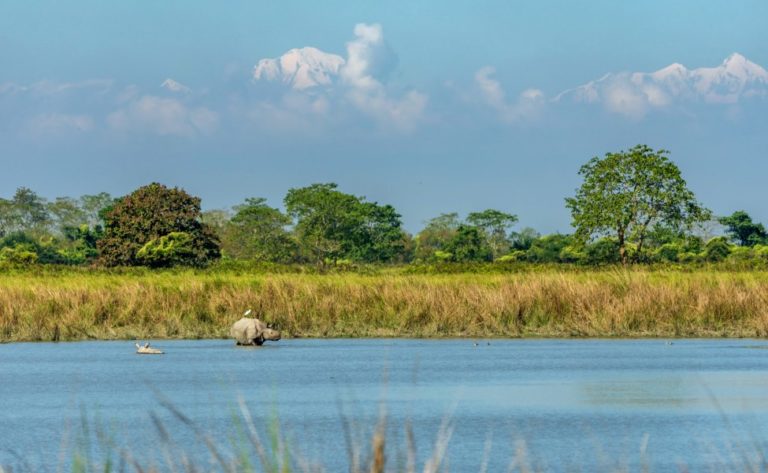
Things to do in Jowai
Things to do in Jowai
Jowai is a breathtakingly gorgeous place in the Jaintia Hills, the heart of Meghalaya. It is famous for its stunning panoramas that are unique to this area. It has frigid winters and nice summers since it is surrounded on three sides by the Myntu River. The area is a modest combination of tradition and vibrant culture, which is reflected in the residents’ way of life. It is home to the Pnar tribes, who are well-known for retaining their own customs and traditions. Tourists come from all over the world to observe the sylvan lifestyle of these tribals, and some of them fulfil their desire to acquire tribal handcraft products straight from the local marketplaces.
Both international and local tourists enjoy seeing Jowai’s two festivals, which are Chad Sukra, which literally means to dance with delight for excellent physical and mental health. It is celebrated in Jowai as a bonding exercise to promote the feeling of togetherness and amity. This event is held in April or May, just before the agrarian community heads out to spread seeds in their different fields. Another popular event is Behdeinkhlam, which takes place after the sowing season and is celebrated by the Pnar tribes.
Lakes, waterfalls, antique bridges, and beautiful green parks abound in the euphoric places, which have enormous tourism potential.
Travel Guides
Things to do in Jowai
Following are the places you can visit with your family, friends and loved ones. Whenever you plan a trip to Jowai:
Krang Suri Falls
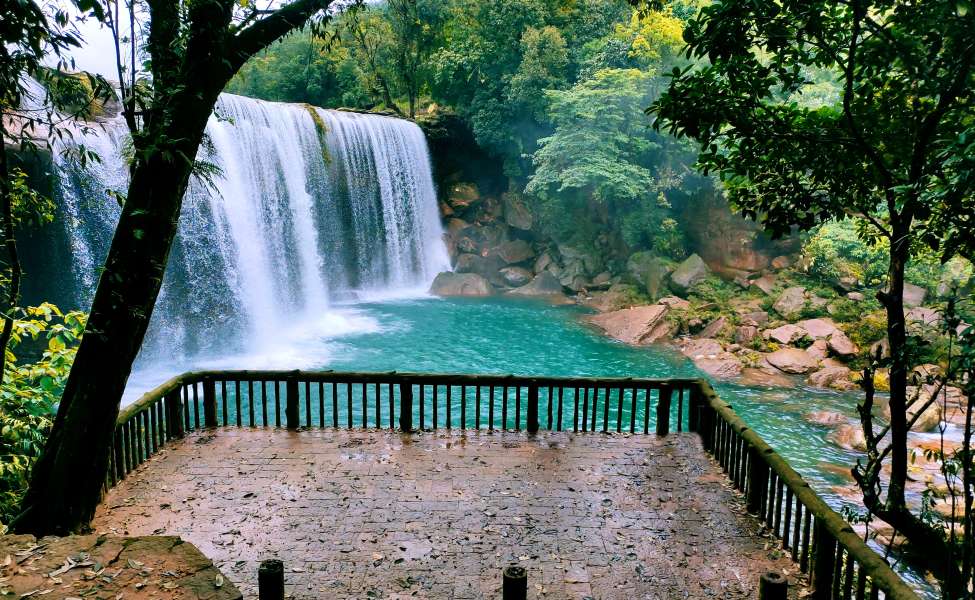
Krang Suri Waterfalls, located in the Jaintia Hills area of Meghalaya, is one of India’s most beautiful natural attractions. Because of its spectacular beauty, Krang Suri Waterfalls has been featured in a number of Bollywood films. You could even see your favourite Bollywood actor filming their next big Bollywood smash near the waterfalls.
The Krang Suri waterfalls are open 24 hours a day, 7 days a week, so you may come whenever you want. The entrance cost to the waterfall premises is INR 50 per person. If you wish to swim in the pool, you must hire a life jacket for INR 100.
Because the Krang Suri waterfalls are located in a rural region away from typical tourist traffic, there is little construction near the falls. A tiny restaurant managed by the local Khasi people serves traditional food. The cost of the meals are reasonable, and the food is great.
The best way to get to the Krang Suri waterfalls is to use the road. Traveling from Shillong, it will take around 3 to 3.5 hours to reach Krang Suri. You may also take a half-hour drive from Jowai to the Krang Suri waterfalls, which is almost 30 kilometres away.
You would most likely be able to view the Krang Suri Waterfalls while driving to it before arriving at the falls. A 20-minute journey through the forest from the parking lot will eventually bring you to the waterfall’s base.
Early morning is the finest time to view Krang Suri waterfalls. If you’re coming from Shillong, depart by 6:00 a.m. to arrive at the waterfalls between 9:30 and 10:00 a.m. The average visit to the waterfalls lasts around two hours.
Tyrshi Falls
Tyrshi Falls is Jowai’s counterpart to Shillong’s Elephant Falls, located about 20 kilometres south of Nartiang on National Highway 6 (Shillong – Jowai Hightway). It is three times the height of Elephant Waterfall. It is easily accessible from Jowai, which is about 5 kilometres away.
It is a little-known waterfall in Meghalaya’s Jaintia Hills District. A lovely arch bridge spans an area of green paddy fields, leading to the flowing Tyrshi falls, which thunders down to the Pynthor (paddy-fields) below. A meandering walkway provides a spectacular and panoramic perspective of the Pynthor Nein while easing your descent to the bottom of the falls, which floats down like milk over a steep drop.
Get off the road and take a short stroll to Tyrshi Falls. This gorgeous and tranquil location is reached through a stroll through paddy fields alongside a softly running creek. The water should be enjoyed by going down further stairs. As with Elephant Falls, you may get to the foot of Tyrshi Falls and experience the rumble of the water .
There are no food places nearby because this is a tourist-free zone. As a result, please bring some snacks. Locals from Nartiang, Shillong, and Jowai gather here for family fun on weekends and holidays.
This is a true paradise for nature enthusiasts and those looking for remote and serene locations.
The greatest time to see Tyrshi Falls is during the monsoon season, when you may experience the full torrent of white water tumbling down the rocks.
However, bring appropriate shoes because the walk might be muddy and the rocks near the falls are quite slippery. Because there is no trash can at the location, visitors should avoid littering around the waterfall, as this harms the environment as well as the natural beauty of the area.
Nartiang Monoliths
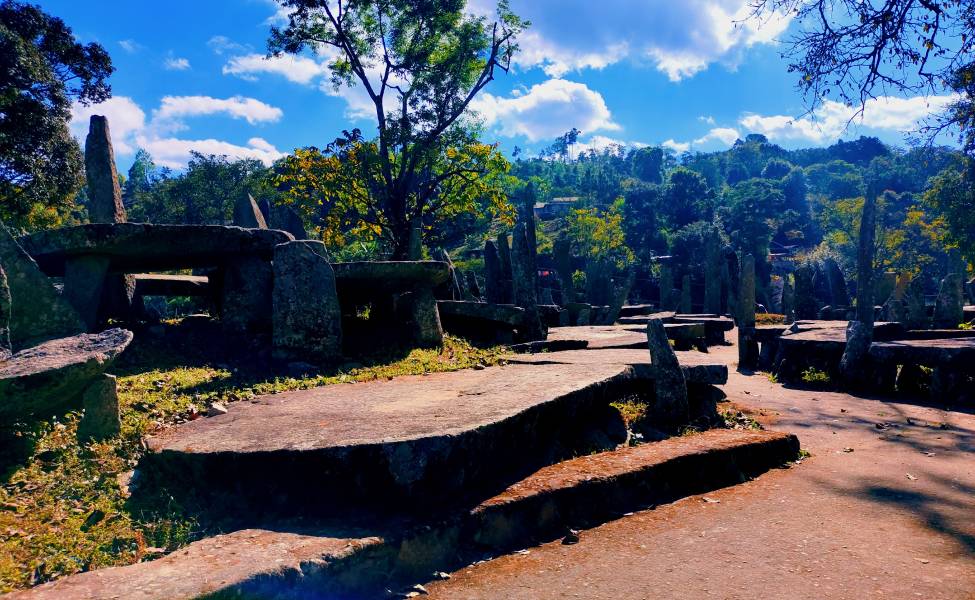
Meghalaya’s Jaintia regions have a distinct royal heritage, and Nartiang is one of the greatest sites to witness well-preserved relics from this magnificent era. The garden of monoliths is a collection of enormous monoliths created as memorials to the ancient rulers. A narrow meandering route snakes around and around the huge monoliths, allowing you to explore and take in the strange scenery. This historic monument also provides good views of the town.
Some of these stones were constructed half a millennium ago, with additions made until the mid-nineteenth century.
The monoliths are an enthralling sight, with possibly the biggest collection of monoliths in a single location and a wealth of historical and cultural value. The upright monoliths, known as menhirs, are devoted to the male ancestors, whilst the flat ones, known as dolmens, are dedicated to the female ancestors.
Nartiang is a historical treasure trove, and the Durga temple, which is near to the monoliths, is another notable site. The Nartiang temple is one of the 51 Shakti Peethas, according to Hindu traditions. The current temple was erected on the site of an ancient temple, and here are housed iron canons used in conflicts by the previous Jaintia monarchs.
An intriguing fact: the Nartiang temple was formerly a location for human sacrifice. And, of course, when in Nartiang, try the great Pnar food at the local restaurants. There’s a lot to try, from different rice preparations to distinctive meat meals.
Bophill Falls

BORHILL [Bophill] Waterfall in Meghalaya, near Mawlynnong and Dawki. BORHILL FALLS / Bophill Falls is one of the secret & untapped tourist destinations on East Khasi Hills that offers wonderful views like other waterfalls in Meghalaya such as Elephant Falls, Seven Sisters Waterfall, Nohkalikai Falls, and so on.
Bophill Falls / Pangthumai Waterfall / Mayaboti Jharna – Meghalaya’s famed Pangthumai Fall [or BOPHILL Waterfall] (India). BOPHILL FALLS is located near Sylhet’s Bisnakandi (Bangladesh). To visit this beautiful Bophill Water Fall located on the India-Bangladesh border, one must go along the Dawki-Riwai route in Meghalaya, India.
Bophill Falls, Dawki, Meghalaya – An unknown and wild beauty on the road from Mawlynnong (Asia’s Cleanest Village) to Dawki (India-Bangladesh Border).
Bop Hill Falls, Dawki, Meghalaya Is a must-see tourist attraction near Mawlynnong [Asian Cleanest Village] and Dawki [India-Bangladesh Border].
Bophill Water Falls, located near Mawlynnong hamlet, is a must-see tourist attraction in and surrounding Cherrapunjee (Sohra), Shillong, Mawlynnong, and Dawki. Mawlynnong is the cleanest village in Asia.
BOPHILL WATERFALL in Meghalaya is located near Mawlynnong and Dawki. Dawki is a town in Meghalaya’s Jaintia Hills district. It is one of India’s and Bangladesh’s few road border crossings. It is mostly utilised for coal transportation to Bangladesh. A huge waterfall dubbed Bop Hill Falls is located on the route around 5 kilometres from Dawki towards Mawlynnong. It flows down to create a river in Bangladesh’s Sylhet Borders. A visual treat, since we rarely come across a locatiom where a waterfall is forming into a river of a neighbouring country plains. The water is milky white and gushy, forming water droplets. Unexplored, tranquil, and deep in nature.A quick stop here for 10-15 minutes is advisable just to take in the scenary. Visitors to Mawlynnong can also go out to this side. It’s about 15 kilometres downhill from Mawlynnong to Dawki. Don’t forget to bring your cameras and, if it’s raining, umbrellas. It is advisable to visit during the monsoon/summer season to obtain the greatest views.
Lalong Park
Lalong, located a few kilometres from Jowai, is a peaceful retreat that provides guests relaxing views of the Myntdu River. It is also the location of a holy grove, providing interested visitors with an insight into the symbiotic interaction between humans and environment. Take a stroll around Ialong eco-park, which is well-kept and features a variety of tree and plant species. The eco-park also has a part with panoramic views of the river valley. Ialong’s paddy fields are nourished by the Myntdu, and their various colours of green provide a pallet for photographers.
The ‘noh sakyriet’ dance is performed in Ialong.
Performers grip opposing ends of a wooden pole (a smoothed tree trunk) hanging perpendicularly on another pole pushed into the ground. The graphics of the ‘noh sakyriet’ dance are unparalleled, like the revolving rotors of a helicopter or a merry-go-round. Another intriguing feature about the dance is that it is exclusively performed in Lalong.
The road to Ialong is dotted with gorgeous rest stations and traditional food delights. As is customary when travelling in Meghalaya, make sure to stop at local vendors and sample some Jaintia goodies with your red tea! We usually advise people to spend more time in Meghalaya, and accommodation choices in Ialong include the Travellers’ Nest lodges, which are created in vernacular forms and operated by the community.
There are a few more local attractions you should not miss if you are travelling around Jowai. Syntu Ksiar, a picnic site by the Myntdu where you can see the Kiang Nong Bah Memorial, devoted to the most respected Jaintia liberation warrior, is one outstanding example. Syntu Ksiar is located on the other side of Jowai town, 11 kilometres south of Ialong. Tyrshi Falls and Thadlaskein Lake are two more Jowai attractions.
U Lum Sunaraja
A deep lake at Umkiang hamlet on top of the hill is thought by the locals to be the location where elderly and aged elephants go to die by hurling themselves into the deep pool. It is also claimed that the prized ivory of deceased elephants is guarded by a massive snake, preventing anybody from stealing the tusks.
Umkiang Village is accessible via taxi or local bus from Jowai. Jowai to Umkiang is a three-hour trip through lush green forest and wonderful roads. U Lum Sunaraja is located on the Umkiang Village hill. A steep hill in Meghalaya’s West Jaintia district must be climbed. The trip to the lake usually takes 4-5 hours. The view from the summit of Khasi and Jaintia Hills is breathtaking.
Umlawan Cave
The Umlawan Cave, located in the unofficial hamlet of Lumshnong village in Meghalaya’s West Jaintia Hills region, is the longest and deepest cave in the subcontinent. The entrance to the Umlawan Caves lies in the heart of Lumshnong hamlet. The peasants use it for washing. The entrance is inundated with water during the monsoons, and one must swim to get inside. The cave contains 24 horizontal and vertical openings, and no area of the cave is more than one hour away from the nearest entrance. This cave is linked to two additional caves, Kot-Sati and Umskor. These caves are more than 21 kilometres long and 100 metres deep. Throughout the area, there are countless additional caves and tunnels with outstanding stalagmite and stalactite formations. Umlawan Cave, also known as Lumshnong Cave, is made of limestone and draws a huge number of visitors each year. It is one of the most well-known caverns in Meghalaya and a must-see attraction near Jowai.
Stone Bridge
The Thlumuwi Stone Bridge is a man-made bridge found in Chkentalang hamlet near Jowai in Meghalaya, 18 kilometres from Jowai Bus Stand. It is one of the most important historical sites in Jaintia Hills and one of the greatest Jowai Tourist Places, located on the Jowai-Amlarem Road.
Thlumuwi Stone Bridge is an ancient historical bridge erected across Muwi creek by Jaintia Hills warriors. The Jaintia rulers ordered the bridge to be erected since it was the path followed by Jaintia Rajas when travelling from their Summer Capital Nartiang to their Winter Capital Jaintiapur. It was constructed of massive stone slabs supported by massive, towering stone pillars.
It is around 500 years old and was shattered when an elephant attempted to cross it.Just next to this bridge is a 50-year-old steel bridge and a 10-year-old RCC bridge.
Thlumuwi Falls, located across Muwi stream, is also close. A gravel walk with signs has been built to allow visitors to view this beautiful waterfall. Every visitor will remember the picturesque panorama of the Thlumuwi stream and the flowing Muwi Falls that overlook the stone bridge.
The entry is free and the visiting hours are 8AM to 5PM.
Sajar Nangli Thadlaskein Lake
Thadlaskein Lake is a tranquil lake found in Mukhla near Jowai in Meghalaya, 9 kilometres from Jowai Bus Stand. It is one of the most beautiful lakes in Meghalaya and one of the most important destinations to enjoy Jowai tourism. It is located on the Shillong-Jowai route.
Thadlaskein Lake is a man-made lake that is a favourite weekend destination for locals. The lake was excavated by the followers of Jaintia Chieftain, U Sajar Nangli, using the bottom of their bows and fed by a perennial spring. The Chieftain had an irreconcilable disagreement with the monarch of Jaintiapur, the erstwhile Jaintia Kingdom, which today comprises Bangladesh’s Jaintia district. U Sajar Nangli was aware that his disagreements with the monarch would surely escalate to intense battle, resulting in a slaughter of their own people, and he refused to be held accountable for such a catastrophe. He and his supporters chose to abandon the realm, but before leaving their beloved country, they created a magnificent lake at Thadlaskein as an eternal tribute. The residents of ‘Raid Mukhla’ venerate the lake and continue to perform sacrifices around it.
Aside from it’s own historical significance, Thadlaskein Lake is a lovely lake that is popular for outings, picnics, and boating. The lake is flanked by lovely meadows and the Myntdu River. Several types of rare orchids can also be seen here. The surrounding plants and wildlife are incredibly stunning and a nature lover’s heaven. Just across road is a tiny motel maintained by Meghalaya Tourism that provides clean and efficient service.
The entry is free and the visiting hours are 6AM to 6PM
Syntu Ksiar
Syntu Ksiar is a picturesque spot in Jowai town, West Jaintia Hills district, Meghalaya, about 4 kilometres from Jowai Bus Stand. It is one of the most beautiful spots to visit in Jowai and one of the most important historical sites in Jaintia Hills, located on the banks of the Myntdu River.
Syntu Ksiar is a large area of land on the banks of the Myntdu River. Syntu Ksiar literally means “golden blossom” in the indigenous Jaintia language. According to folklore, the location was named after a lady named Syntu of the ‘Iawchibidi’ tribe.
The lady is said to have committed suicide by jumping into the river here. Following her drowning in the river, a lovely golden flower blooms in the middle of the river that is reported to be incredibly beautiful and cannot be picked by anybody. As a result, the location was named for the flower that blooms there.
Syntu Ksiar is also known as the hub of the liberation movement since it was here that freedom fighter Kiang Nangbah launched the war against the British. On December 30, 1862, he was hung at Jowai town. In commemoration of Kiang Nangbah, a monument has been placed here.
Syntu Ksiar is now a popular picnic and fishing place in the Jowai district. It is one of the sites around Jowai where travellers come to rest and enjoy their family while basking in the gentle sun and refreshing river wind. Across the river is a lovely wire suspension bridge and a water collecting system. There are also a few modest fast-food restaurants nearby where you may sample some of the local delights.
The entry is free and the visiting hours are 7AM to 5PM
Ruparsor Bathing Ghat
Ruparsor Bathing Ghat is located on the Jowai-Muktapur-Dawki route near Syndai village (50 kilometres from Jowai). It consists of a lovely granite bathing pool that forms the bed of the Rupasor stream. On the right wall of the pool, which acts as a platform, an elephant facsimile has been carved. There are two massive boulders with sun and moon motifs on them. According to legend, this lake was built by U Mar Phalangki and U Luh Lyngskor Lamare under the supervision of the Jaintia monarch. The pool is nineteen and a half feet long and fifteen feet wide, and an elephant duplicate was cut out of the same rock. North East India’s monarchs and their family are supposed to visit this ghat before performing cultural and religious rites and festivities. The summer capital of the Jaintia monarchs was Nartiang, while the winter capital was Jaintiapur. They used to take baths here when travelling. It is also known as a regal ghat since rulers from the Khasi and East Jainti eras used to reign over the ownership of the Ghat, as shown by inscriptions on the ghat and lake stairs. Sculptures depict the fine art of the ancient Jaintia kingdom. The swimming ghat is not just a site for tourism, but it also allows for some self-indulgence.
There is much to entice the senses, both for enjoyment and for being soaked in the spirit of adventure. On weekends, locals gather here to relax and unwind. It is an ideal destination with all of the popular sites of interest, unique layouts that meet international standards, amazing architecture, and well-thought-out execution. The adjacent market has fantastic goods and items.
Jarain Pitcher Plant Lake
The pitcher garden that surrounds Jarain Pitcher Plant Lake inspired the lake’s name. The Meghalaya government constructed it (Soil and Water Conservation Department). The lake is easily accessible from the Jowai-Amlarem Road. The carnivorous Nepenthenes khasiana pitcher plants cover an area of 50,000 square metres. It improves the overall appearance of the area because everything from the boathouse to the fountain in the centre of the lake has been designed to resemble the symbolic pitcher plant. The lake is made out of a greenhouse, an arched bridge, and gravel paths. The calm waters nicely reflect the image of the adjacent hillocks on a gorgeous day. The lake is also ideal for boat trips. The Jarain Pitcher Plant Lake is also a great spot for bird watchers because it attracts a lot of migrating species. The ideal time to visit this location is between November and June, when you may take a cab from Shillong.
Iooksi Kupli Park
Looksi (Kupli) Park is located in Looksi village in the Laskein Block of Meghalaya’s Jaintia Hills. It is roughly at a distance of 40 kilometres from the district headquarters. To develop the park, the district government built a road leading to it through the Department of Forestry. They’ve also created ram shelters, fences at lookout areas, and seats for visitors to sit on. There are also play areas for children, such as slides and swings, to help them enjoy their time at the park and attract additional people. Overall, it’s a great area to get away from the hustle and bustle of city life and spend time with family and friends. On the banks of the Kupli River, there is also a recreation centre. Looksi Centre School Organization, a local NGO, holds boat racing and swimming contests here on a regular basis. The best method to go to Looksi Park from Shillong is to hire a tourist taxi.
Foods of Jowai
Jowai would provide a rich and unique side of non-vegetarian foods from Meghalaya. There are several beef, fish, and pig preparations that are popular and widely available. Chicken, fresh seafood, and beef are other wonderful culinary options. Non-vegetarian recipes dominate the plate here, and vegetarians may be disappointed by the lack of variety and richness in the cuisine. Simple and basic vegetarian foods are available in the region, though.
The most popular Restaurants of Jowai are The Work, Jaintia Food Stall, Swish Cafe and Matter of taste.
Frequently Asked Questions on Things to do in Jowai
Because Jowai is a very rainy location, the ideal months to visit are October to November and March to June. It’s this time of year when the weather is lovely and ideal for visiting Jowai. Because of the regular frequency of landslides and floods, the monsoon season is not an excellent time to visit Jowai.
The most convenient method to go to Jowai from Guwahati is to rent a bike or a vehicle. In Guwahati, Zoomcar is available. Guwahati has a number of bike rental companies. Start travelling towards the Guwahati-Shillong route once you have your car or bike. Google Maps is highly precise, and the roads in the curling hillside picturesque beauty are excellent. Simply put Jowai into Google Maps and follow the directions.
Please keep in mind that there are two methods to go to Jowai: one via Shillong and one without stopping in Shillong. It is up to you to decide which route to choose. You can come immediately if you merely intend to visit Jowai. Taken straight to Jowai would be a better alternative if you are considering two days in Jowai, two days in Dawki, two days in Cherrapunji, and two days in Shillong. The number of locations and days depends on your itinerary, but it should not be fewer than two days.
Outside of the rainy season, the roads are excellent and pose little danger. If you are visiting during the Monsson season, make sure to monitor local news and social media pages for possible road closures caused by floods and landslides.
Ksiar, Syntu
Lake Jarain Pitcher Plant
Monoliths of Nartiang
The Lalong Park
Tyrshi Falls

